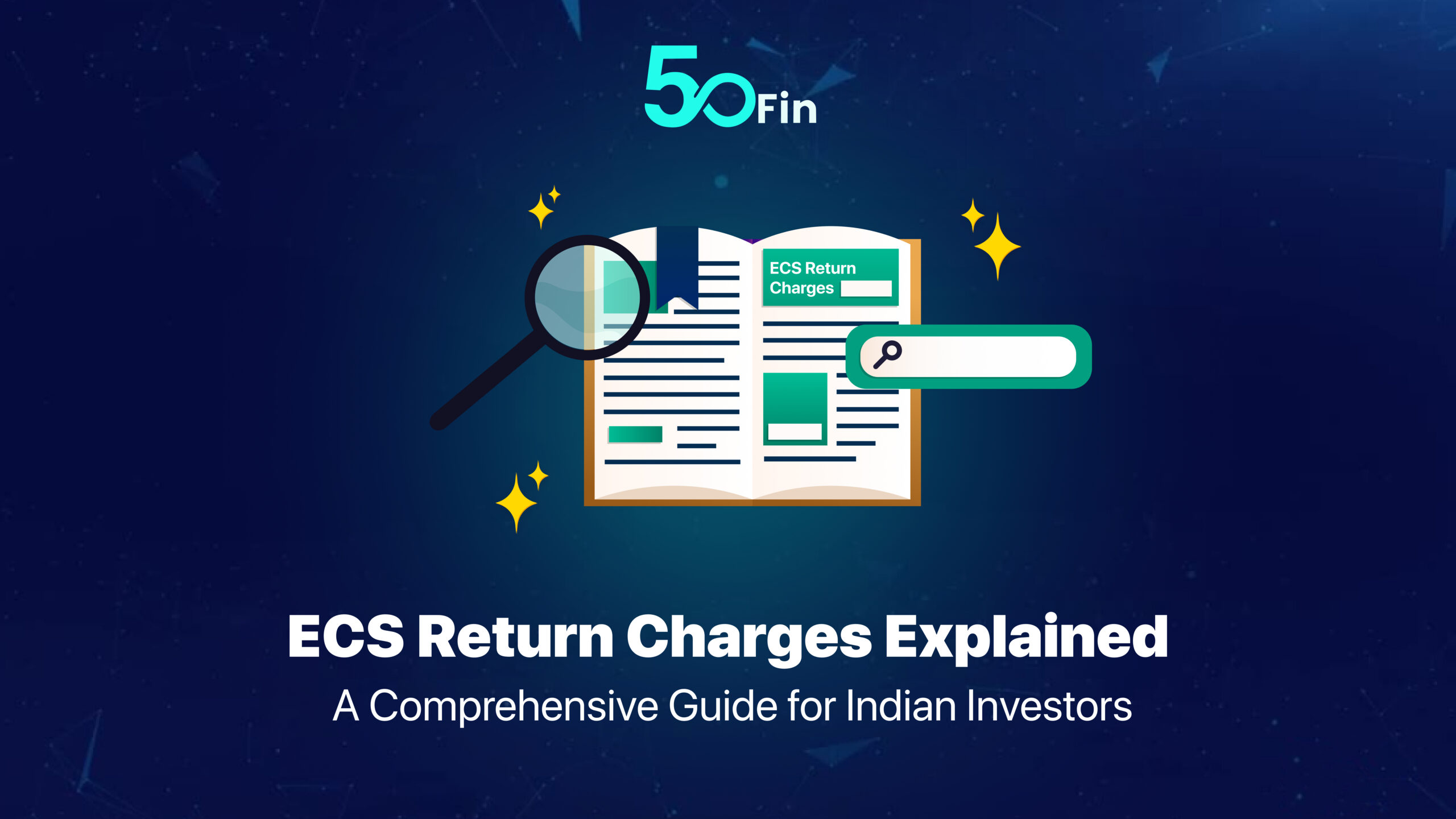
Loan Against Mutual Funds Process
Mutual funds are one of those types of investments now that aren’t just a money-saving tool.
Rather, they could be extremely helpful for reasons like acting as collateral while borrowing a loan.
Yes!
Loans against your mutual fund portfolio are one of the most emerging concepts among Indian audiences now and definitely something to benefit from.
But how do loans against mutual funds work?
What is the process like?
Let’s talk about that in detail.
Understanding loans against mutual funds
Even though we’ve already talked about mutual fund loans in detail, it’s important to understand how it works and how you can borrow a loan against your mutual fund portfolio.
First things first, a loan against your mutual funds means borrowing money against your mutual fund investments while keeping them as collateral.
A loan against mutual funds, allows investors to borrow money from financial institutions by pledging their mutual fund units as collateral.
The loan amount that you can borrow typically is a percentage of the net asset value (NAV) of the mutual fund units pledged.
This option allows investors to access their mutual funds without actually liquidating them. Most importantly, this type of loan is something that’s preferred by all types of mutual fund investors.
Why do people prefer loans against mutual funds the most?
Digital lending has significantly taken off across India over the last few years.
And even though traditional loans retain their popularity, investors understand the importance and ease that mutual fund loans actually offer.
The process is simple – Pledge your portfolio and borrow a loan against it by keeping your assets as collateral.
But that’s not all.
Here’s what else is attractive to investors exploring this option:
1. Loans on mutual funds are convenient
Loan convenience is extremely important for people who want a quick cash injection on the go.
Most people who want a short-term loan don’t usually want to deal with long documentation and other hectic procedures that cost them time and energy.
But a loan on your mutual fund portfolio means no physical paperwork, quick approvals, and saving time.
One of the most interesting features of this type of loan is that you don’t keep your physical properties like land or jewellery as collateral.
Rather, you’re using a digital asset that you continue to own even after you put it up as collateral.
This type of loan is extremely beneficial in the short and long term, which explains the growing popularity of this type of loan.
2. Attractive interest rates
When borrowing a loan, it’s a no-brainer that an interest rate is an important factor.
Personal loans can have an average interest rate of up to 24% p.a.
Credit cards can have an average interest rate between 5.88% and 41.88% p.a. APR.
Mutual fund loans are different, however.
At 50Fin, the annual interest rate for mutual fund loans is just 10.5% p.a.
This interest rate is highly attractive to investors. Since the mutual fund units act as collateral, it’s perceived as a low-risk, low-interest rate loan, making it a favorable option.
3. Flexible Repayment Options
Now here’s the thing.
Repayment is made flexible with almost all types of digital loans in today’s time.
From a US student loan to an Indian home loan, loan digitization means you have all relevant loan details on your own phone – ultimately allowing you to pay at your own convenience.
Mutual fund loans follow the same route.
Because of how everything is digitized, your mutual fund loan lender like 50Fin will allow you to pay back your loan amount anytime you want.
This also means that borrowers will have to stick to certain (usually monthly) repayment schedules that align with their financial capabilities.
Eligibility Criteria for Loan Against Mutual Funds
During your loan tenure, it’s possible for your portfolio to lose value according to market fluctuations.
If that happens, your lender may issue margin calls requiring you to either repay part of the loan or pledge additional assets.
Failure to meet margin calls can lead to the liquidation of your mutual funds, potentially resulting in losses.
From lender to lender, platform to platform, your eligibility criteria for your loan vary.
Talking about 50Fin, you need to have a minimum portfolio value of Rs 50,000 to be able to borrow a loan against your mutual fund portfolio.
But that’s not all.
Here are a few more requirements that you need to avail a loan against mutual funds:
1. Ownership of Mutual Fund Units: The borrower must be the owner of the mutual fund units pledged as collateral. Joint holders may also be eligible, subject to the lender’s policies.
2. Type of Mutual Funds: Typically, both equity and debt mutual fund units can be pledged for a loan. However, some lenders may have restrictions or preferences regarding the type of funds accepted as collateral.
3. Minimum Value of Units: There is usually a minimum value of mutual fund units required to avail of a loan. Financial institutions may set this threshold based on their risk assessment and lending policies.
Steps To Borrow A Loan Against Mutual Funds
Depending on the lender or the platform you choose, the steps of borrowing a loan against mutual funds may vary.
But then again, here are the most common (and important) steps that are involved in every mutual fund loan borrowing process:
1. Evaluate Eligibility and Loan Amount: The entire process begins by assessing your eligibility based on the eligibility criteria. Determine the loan amount you require and ensure it falls within the permissible limits based on the mutual fund units’ value.
2. Select a Lending Institution: At just a 10.5% p.a. Interest rate and loan approval in 4 working hours, 50Fin is one of the best lenders across India for you to borrow your mutual funds loans.
3. Application Submission: Since you’re pledging your mutual fund portfolio, the entire application process is digital and requires no physical paperwork. All you have to do is to sign an e-agreement. This also includes pledging the required mutual fund units by providing the necessary authorization.
4. Loan Disbursement: Upon successful verification of documents and collateral, the loan is disbursed directly to your bank account. Loan disbursement usually takes 4 working hours with 50Fin.
Key Considerations and Tips
1. Loan-to-Value Ratio: Different lenders offer varying loan-to-value (LTV) ratios, which determine the percentage of the mutual fund units’ value that can be borrowed. Compare LTV ratios to optimize your borrowing capacity.
2. Repayment Flexibility: Prioritize lenders offering flexible repayment options, including the ability to prepay or foreclose the loan without significant penalties.
3. Impact on Investment Strategy: Assess the impact of pledging mutual fund units on your overall investment strategy, including potential tax implications and long-term financial goals.
4. Risk Awareness: Understand the risks associated with loans against mutual funds, such as market fluctuations affecting the value of pledged units and potential margin calls in volatile market conditions.
5. Documentation and Legal Aspects: Ensure all documentation, including the loan agreement and collateral pledge, is thoroughly reviewed and understood to avoid misunderstandings or disputes later.
Mutual Fund Loans Made Easier With 50Fin
Because of the convenience and ease around mutual fund loans, it only makes sense to equally benefit from them.
One of the best things about this type of loan arrangement is how simple the process is.
Now what matters significantly is how reputed your lender is and how easy they can make this process for you.
50Fin is one of the best examples in this case.
With an approval time of just 7 minutes, easy digital documentation, and no minimum CIBIL score required, it only makes sense to borrow your loan against mutual funds from 50Fin.
Get FREE Eligibility Report
Instantly check your eligibility for Loan Against Mutual Funds
- No Minimum CIBIL Required
- 100% Digital
- 4 Working hour disbursal
Looking for Loan Against Stocks?
Recent Articles
This comprehensive guide covers everything you need to know about loans against mutual funds in India, including benefits, eligibility criteria, interest rates, risks, the application process, and frequently asked questions.
This guide provides a comprehensive view of NSE and BSE stock market holidays for 2025, highlighting opportunities for long weekends and essential details for every trader. Use this resource to check if the Indian stock market is open today, plan for share market holidays tomorrow, or get insights into market closures throughout the year.
For Indian investors and borrowers, understanding ECS return charges and learning how to avoid them is crucial. This comprehensive guide covers everything you need to know



